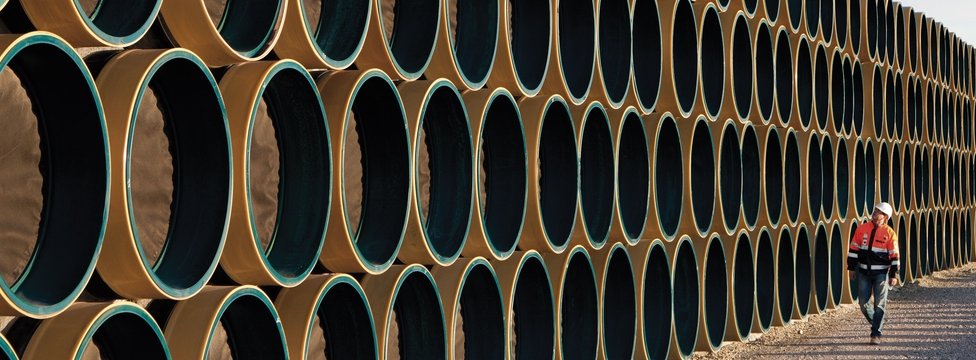The Pipeline
The Nord Stream twin pipeline system through the Baltic Sea runs from Vyborg, Russia to Lubmin near Greifswald, Germany. The pipelines were built and are operated by Nord Stream AG.
The Nord Stream route crosses the Exclusive Economic Zones of Russia, Finland, Sweden, Denmark and Germany, as well as the territorial waters of Russia, Denmark, and Germany.
Direct Connection Between Russia and the EU
The two 1,224-kilometre offshore pipelines are the most direct connection between the vast gas reserves in Russia and energy markets in the European Union. Combined, the twin pipelines have the capacity to transport a combined total of 55 billion cubic metres (bcm) of gas a year to businesses and households in the EU for at least 50 years. As the project strengthens the EU energy market and reinforces security of supply, the project has been designated as being of "European interest" by the European Parliament and Council.
Construction of Line 1 of the twin pipeline system began in April 2010, and was completed in June 2011. Transportation of gas through Line 1 began in mid November 2011. Construction of Line 2, which runs parallel to Line 1, began in May 2011 and it was completed in April 2012. Gas transport through the second line began in October 2012. Each line has a transport capacity of roughly 27.5 bcm of natural gas per annum.
Reliable Gas Sources
Bovanenkovo oil and gas condensate deposit is the main natural gas base for the Nord Stream Pipeline. Bovanenkovo lies in Western Siberia (Russia), on the Yamal Peninsula, 40 kilometers from the coast of the Kara Sea and covers an area of about 1000 square kilometers. Searched and estimated gas reserves there amount to 4.9 trillion cubic meters which makes the Bovanenkovo field a reliable source of natural gas for Europe. The license for the development of the Bovanenkovo field is owned by Gazprom Dobycha Nadym LLC, which is a 100% subsidiary of PJSC Gazprom.
Infrastructure for Secure Gas Supply
A 917-kilometre onshore pipeline in Russian territory built by Gazprom connects Nord Stream to the Russian gas transmission system. Two onshore connections from Greifswald to the south and west of Germany, with a total length of more than 900 kilometres, built by W&G and E.ON SE, connect the pipeline with the European gas transmission system.




